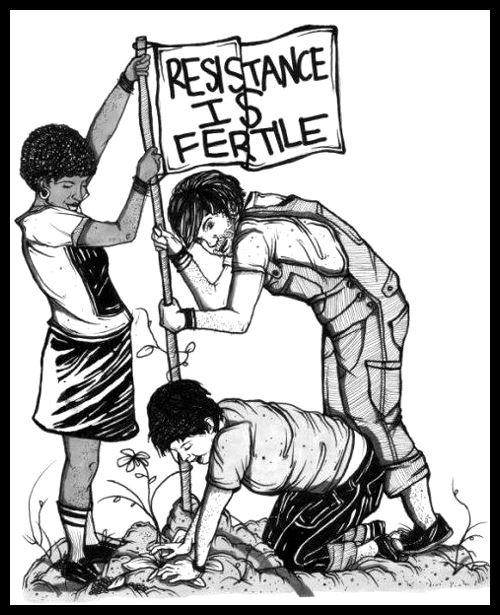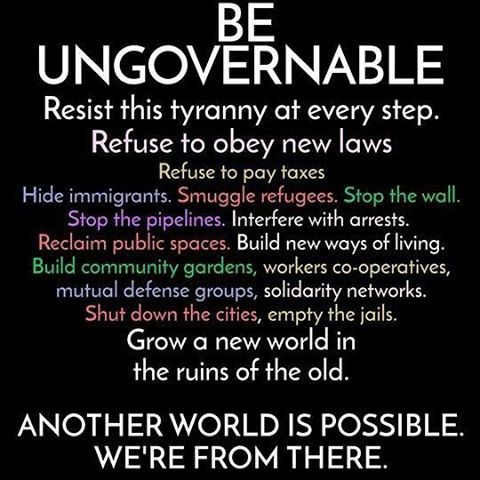PART’s Perspective: When Will We Ever Learn?

by Michael Novick, Anti-Racist Action-Los Angeles/People Against Racist Terror (ARA-LA/PART)
Many people were stunned by the outcome of the presidential election, and the decisive, if close, victory of Donald Trump. How, they ask, could so many millions of people vote for an open racist and misogynist, immigrant-bashing vengeful narcissist who promised to be a dictator on day one, who has encouraged and unleashed openly fascist thugs, and who plans to use the military to deport tens of millions of people?
But the question must also be asked, how could so many other millions of people vote for a warmonger complicit in the genocidal attacks on the Palestinian people and in turning NATO into an aggressive alliance aimed at both Russia and China? How could they vote for hypocritical virtue-signaling about the environment and workers’ and women’s rights when the outgoing administration presided over record-breaking fossil fuel extraction, broke a railworkers’ strike, and never legalized reproductive and abortion rights or raised the federal minimum wage?
That same outgoing Biden-Harris administration convicted Julian Assange of violating the Espionage Act for exposing US war crimes, and prosecuted the Uhuru Three, criminalizing freedom of anti-colonial speech. How could people embrace a campaign that ran away even from Bernie Sanders, and embraced a chicken-hawk war criminal from the George W. Bush administration like Dick Cheney?
The answer to this conundrum lies in the settler colonial nature of US society, in the biggest lie — that we live in a democracy — and in the fact that the US is the world bastion of reaction. Elections here are a multi-billion-dollar spectacle that is used to manufacture both consent and a false and fruitless dissent that changes nothing. The choices presented in the election amount to the choice offered to prisoners facing the death penalty in Utah — between methods of execution. It is a choice between orderly exploitation, militarism and oppression, and chaotic, disruptive exploitation, militarism and oppression. No candidate or party with a remote possibility of winning office represents the interests of those exploited, oppressed or colonized by this system. In an empire such as this, there are no citizens — only subjects.
The willingness of over 150 million people in the US to vote for either of the two main imperialist candidates for president represents the deep-seated defeatism, compliance and complacency of the majority of the US electorate. It demonstrates the current isolation of anti-imperialist and anti-colonial forces within the US. Even as the material conditions and impact of environmental crisis continue to worsen for most people in this country, the grip of identification with empire remains strong. Neo-fascist strategies and false “solutions” have greater appeal and organic connection to many sectors, even among poor and working people.
How do we begin to turn this around? How can we drive wedges into the mass base for empire and settler colonialism? What will it take to confront, undermine and out-organize the forces pushing from above and below for more naked fascism, and its inevitable partners of war and genocide? Electoral politics, certainly at the federal level, has nothing to offer but delusion.
Imagine if the tens of millions of dollars poured, in small donations, into the campaign coffers of the duopoly parties had been applied instead to concrete programs of mutual aid, of tenant organizing, direct-action provision of reproductive health care, independent people’s media and grassroots educational and consciousness-raising efforts, debt-strike organizing, workers’ self-defense efforts at the workplace and in the community (including in carceral workplaces and communities), urban-rural alliances for restorative agro-ecological practices, or international solidarity efforts. We would be manifesting and building our strength rather than bemoaning our losses.
We need to be about creating and nurturing those dispersed seedlings of a new and better world, so that poor and working people begin to get a sense of our own creative power, a sense of what we are fighting for “from one generation to the next.” We need to recognize and heighten the frustrations and contradictions of poor and working people towards our rulers, and strengthen the bonds of solidarity and unity among people who have been marginalized and dispossessed.
We need far more than a retread of the toothless “#Resistance” of the first Trump administration. As I wrote eight years ago, in December 2016:
“A lot of people these days are talking about resistance without a clear conception of what it entails or on what it can be based. What are the examples that can guide us in deepening our understanding and practice of resistance? Many people associate the term resistance to opposition to fascism. We can look, it’s true, to the French Resistance against Nazi occupation during World War II, as well as that of the Greeks and Yugoslav partisans, and to examples of Resistance inside Nazi Germany itself.
“But we must also look to the Algerian resistance to French colonialism, to the Vietnamese resistance against French, Japanese and US occupation, Palestinian resistance to Zionist occupation, Azania/South Africa resistance to the Brits and the Boers, to the indigenous resistance to half a millennium of settler colonialism in the Americas. In Puerto Rico, which has been colonized, with genocidal impact, since Columbus, resistance principles were once summed up in a concept of ‘retraimiento,’ translated as a refusal to identify with their oppressor or to collaborate in their own oppression.
“Resistance must almost always operate at least partially from clandestinity [because it will be illegal]; it must incorporate multiple modalities and tactics that will include physically impeding and disrupting the operations, wealth extraction, military maneuvers, surveillance, propaganda and methods of domination of the oppressor.
“So today, … resistance in the US must be anti-capitalist and anti-colonialist. Within that framework, there is room for a diversity of tactics, organizations, alliances and even ideologies. The base of solidarity from which people can resist, and the goals of liberation towards which any resistance must chart a course of positive social transformation, do not require uniformity. We will all be inevitably enlightened, educated and transformed in and by the struggle. Some may resist based on religious faith or the collective consciousness of a denial of national rights and sovereignty. Others may fight to preserve and protect the earth, the water and the life forms that dwell therein, or to end their own poverty, degradation and the theft of their humanity and creativity. Or it may be a combination of such factors.
“Too many on the left for too long have been defined by either/or political positions and sectarianism, to mutual detriment and eventual often fatal defeats. [S]uch divisions have weakened the peoples’ movements, and given a freer hand to the oppressors and exploiters, the Empire, to divide, conquer and repeatedly liquidate threats. We cannot afford the same errors again…
“We all must increase the level of risk we are willing to take, the level of commitment we are willing to make, recognizing that the greatest risk – in fact the guarantee of defeat, of a half-life of submission and of mass extinctions – is to do nothing. We have to figure out ways to become ungovernable, to weaken the bonds that hold people in subordination to and identification with the oppressor, to identify and exacerbate the internal contradictions of our enemy – the oppressors and exploiters and those attack dogs who carry out their orders.
“The erratic nature of Trump’s pronouncements and personality make it hard to predict exactly what forms of resistance we may be called upon to practice. But whether it involves an Underground Railroad/Sanctuary system for undocumented people; provision of birth control, abortion and other reproductive health services to women; creation of secure means of communication or whistle-blowing on the surveillance state; community self-defense mechanisms; or protection of fragile and threatened eco-systems from the death machine of capitalism, any effective resistance is likely to involve illegality, and facing down repression.

“Resistance presupposes moving from a position of relative weakness to one of relative strength, to begin to dictate to and shape the circumstances of the enemy, as opposed to vice versa. The Black freedom movement, the indigenous sovereignty movement, the prisoners’ struggle against legalized slavery under conditions of captivity and repression all point the way forward. Like settler colonialism, these forms of resistance were around long before Trump. We must base our collective resistance on a culture and communities of solidarity and a vision for liberation that will create a pole of attraction to draw people into the resistance movement and struggle, one that can and must go on beyond the lifetimes of those who initiate or revive it.”
That level of resistance did not take shape in 2017 or thereafter, with the consequences we now face — of genocide witnessed on Instagram and X, or unending and escalating climate catastrophes, of public media, public health and public education on the brink of extinction or transformation into tools of social control and openly fascist indoctrination. We have a second chance to get it right this time. We must not fail.
